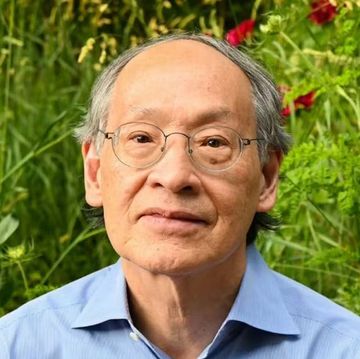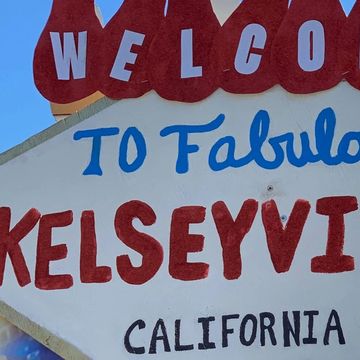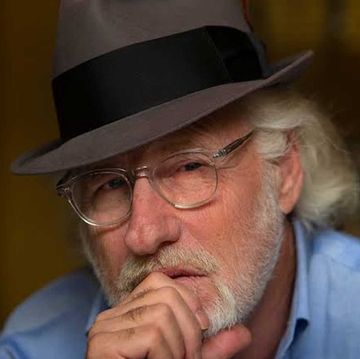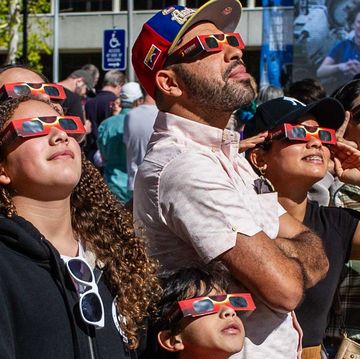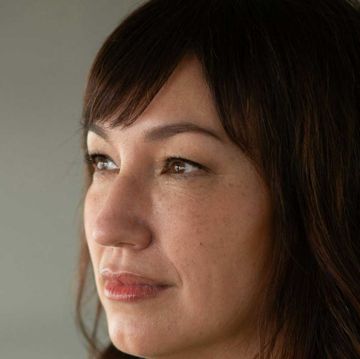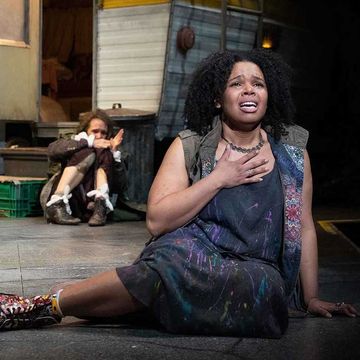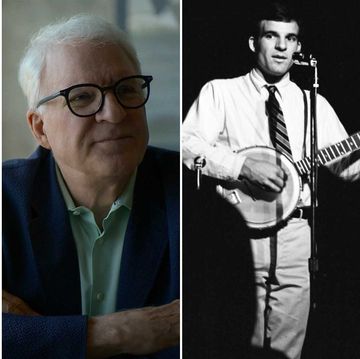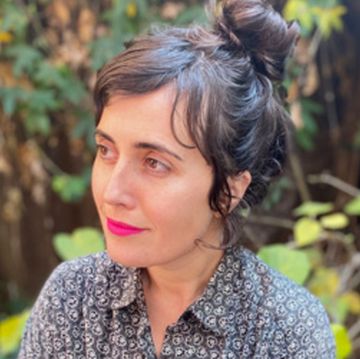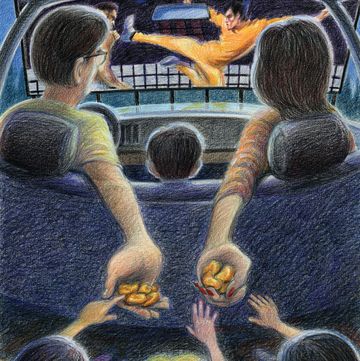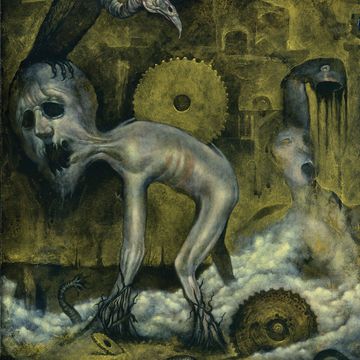Lisa See is an author and journalist, one-eighth Chinese, who grew up in Los Angeles—staying for extended periods with her grandparents in Chinatown. Her fascinating 1995 debut, On Gold Mountain: The One-Hundred-Year Odyssey of My Chinese-American Family, tells the true story of her paternal great-grandfather, Fong See, a Chinese immigrant, and his white wife, Ticie, née Pruett, and generations of their descendants, including her father, Richard See, who married Lisa’s mother, the notable white book critic and author Carolyn See. Carolyn See’s father was also a writer, and he advised Carolyn, who passed along the same advice to her daughter, to write 1,000 words a day. The younger See continues this practice. After See’s parents divorced, her mother asked her to read her freelance articles when they were close to finished, to find any contradictions or repetitions.
See has devoted her decades-long career to telling the stories of Chinese and Chinese American women and their friendships and family relationships. Following On Gold Mountain, she wrote many other books, including eight works of historical fiction, some of which are set in China, others in California. These include her breakthrough novel, Snow Flower and the Secret Fan, as well as Shanghai Girls, Peony in Love, The Tea Girl of Hummingbird Lane, and, most recently, Lady Tan’s Circle of Women, which centers on the unusual story of Tan Yunxian, a brilliant real-life doctor—a woman who treated women during the Ming dynasty.
To write her historical fiction, See blends extensive archival research, interviews, and travel, eventually working from detailed outlines as long as 45 pages. However, the novels depend strongly on her memory and intuition. For Shanghai Girls, for instance, she drew from 500 pages of immigration interrogations of her Chinese American ancestors that she’d previously read to write On Gold Mountain. But apart from that documentation, See brought to the book her own understanding of the impact of discriminatory laws. Owing to anti-miscegenation statutes, earlier generations of her Chinese American family had needed to sign contracts to bind themselves to one another, and her parents’ marriage was only the second legal marriage between whites and Asian Americans in the family. See grew up in an atmosphere of secrecy around their Chinese backgrounds; relatives in her father’s generation were told “never, ever” to reveal their Chinese ancestry to anyone because they would lose their house and be unable to go to school. “If it got out,” she says, “the consequences for the entire family would be dire.”
While See draws on memory and research into family history, a willingness to pursue chance encounters and other forms of serendipity has led her to research and write about unfamiliar histories as well. At one point, she went to Yunnan Province to research a book about adoption and pu’er tea and came away writing about one of the province’s many ethnic minorities, the Akha. The author had met a girl who reminded her of herself, collecting and telling stories about her family.
See joined me on Zoom from a bright room in her Los Angeles home to talk about Lady Tan’s Circle of Women and the stories behind her books. Occasionally, she jumped up to show me visuals of what we were talking about—a Post-it, a poem. This interview has been edited for clarity and brevity.
ANITA FELICELLI: Can you tell me about your process for researching and writing your family history, On Gold Mountain, and your historical novels, like Lady Tan’s Circle of Women?
LISA SEE: We learn history, sort of the front line of history: wars, dates, the presidents, the generals. But if you take one step back, who’s there, you know? It’s women, it’s children’s families, and they’re there every single step of the way. It’s just we don’t really hear those stories.
The way I did the research for On Gold Mountain is the way that I do research today for the historical novels. When I can, I interview people who lived through that time. With Lady Tan’s Circle of Women—that took place 500 years ago. I can’t interview anybody from there, but people wrote stuff, and you can find it looking for first-person narratives, looking for letters, looking for things that people wrote and left behind. I read a lot of unpublished dissertations by people who have spent their professional career focused on one narrow thing that turns out might matter to me in a particular book. Going to the places that I write about. Trying to eat the foods that you know the characters are eating in that time. Even finding old recipes can really tell you a lot about how people were living.
I live pretty close to UCLA and have been in seven research libraries there. I remember one time at UCLA being up on one of their little ladders. On this top shelf was where they had these books on, like half a shelf of books on the Ming-Qing transition: this period in the mid-17th century between these two dynasties. One of the books I pulled down was a collection of first-person narratives that somebody had collected from those decades. One of them was a remembrance written by a man who had hid in a stable. He said to his wife—they had a hay pile, and the soldiers were coming—“My mouth wants to go on eating for a few more years.… We’re going to go in that hay pile. But you’re going to be on top of me.” I remember reading that and I think, “I wonder how she felt?”
I think in all your work, it’s, How does she feel about that? Especially with Lady Tan’s Circle of Women.
I wonder if some of that is my mother and my grandmother and my great-grandmother. Obviously, I didn’t know my great-grandmother Ticie, but I certainly heard a million stories about her. She had such an influence on my grandmother Stella and how she approached the world. All three of them were basically orphaned, but they then created family as best they could. So I think that it was almost ingrained in me, literally in my blood, in ways that maybe I don’t even fully understand.
In On Gold Mountain, you explain that your great-grandmother Ticie felt that she was Chinese. Tell me a little bit about the long periods that you’d spend in Chinatown with your grandparents, hearing stories of Fong See and Ticie?
My parents were married when they were very young, and they were divorced when they were very young. They were only married three years. My mother would have been 24, I think. And they were both going to UCLA, and they had no money. I spent a lot of time with my grandparents. I would go to the family store with my grandparents—and we had all the brothers there—making the rounds of Chinatown, that old part of Chinatown.
When I think about Ticie and when she came here, in 1897, before meeting Fong See, Los Angeles Chinatown was tiny. Obviously, if you were Chinese, you wouldn’t live outside of Chinatown, so she had to adapt herself to that culture completely. I spent a lot of time with my father’s side of the family when I was little; my mother’s family was tiny, maybe 10 people back then, and today there are four left, including my sister and me. But my father’s side of the family—a really big family—had lots and lots and lots of kids, before birth control. I probably had about 400 relatives on that side of the family here in Los Angeles alone.
When I looked around me, what I saw were Chinese faces. What I experienced was Chinese culture, Chinese tradition, Chinese food. And so the people who are around you, they’re your mirror. The ones who are telling you who you are. If I looked at an actual mirror, I could say, Oh, this is something that doesn’t match. But I wasn’t doing that. I was looking at everybody, and they were looking at me. I think that must have been very similar for Ticie.
The protagonists of the books of yours that I’ve read have sometimes felt a little apart from their society; with Lady Tan, there’s a feeling of being unique in the environment in some way.
Tan Yunxian was unique. Her circumstances were just not like other women’s at that time. It’s pretty clear that her grandparents were extraordinary. One night, her grandfather said, “This girl is too smart to just be confined to reciting poetry and doing embroidery. We should teach her my medicine.” It’s her grandmother who teaches her, but if he hadn’t said that, I don’t see how she could have become a doctor.
Often, readers will say things like “I’d like to write about my family, but they never did anything interesting.” I think that that is a pattern we have about women, especially. When I was a kid, all the stories were about Fong See, almost nothing about Ticie. There’s a gender thing that goes on, and with any family, all you have to do is look back a little bit and see how extraordinary people were and what they did. We’re on their shoulders for everything that they did before us. And it may not be labeled “extraordinary.” She was a wife and mother—is that extraordinary? Well, maybe in the time.
On Gold Mountain was adapted into an opera. What was it like to write the libretto and see your own family stories expressed in another medium?
It was an opera, but it was also a museum exhibition. That was at what was known as the Gene Autry Western Heritage Museum from 2000 to 2001. It is still today one of the largest exhibits ever on the history of the Chinese in America, and it traveled to the Smithsonian, but it really used my family as the throughline. Telling the history of the Chinese in America, but purely visually, with artifacts and archival materials. With the opera, you’re telling the same story, right, but through the pure emotion of music. Those two things completely changed how I write, because [I wrote my first historical novel after that], Snow Flower and the Secret Fan, so telling the story purely visually, but also through this emotion of music.
Two years ago, LA Opera and the Huntington remounted it in the Chinese Garden. The woman who played Ticie—it was a two-week run—by the end, she had so embodied Ticie and her heartbreak, but also her courage, that people [were sobbing] in the audience.
What are you working on now?
The next book is set in L.A., using as the backdrop the 1871 Los Angeles Chinese massacre. This has given me a chance, or an opportunity, to look at this time period in Los Angeles, 1870: only 5,000 people lived here. There were about 190 Chinese, of which some 35 were women. We don’t learn this, but Los Angeles was considered to be the wildest of all the Wild West towns. More murders, more rapes, more assaults, more lynchings—we were one of the most violent, and L.A. was just a little dirt blob. The makeup of the city was heavily southern. Los Angeles was the only West Coast city in the Union to send a regiment to fight on the side of the Confederacy.
Earlier this morning, I was looking at photos online from Los Angeles in 1924. It’s completely cars and streetcars and skyscrapers, and the City Hall is almost finished, and the Hollywood Bowl is finished. And it’s this incredible, urban sprawl that goes on forever. Not a lot of time has gone by. Something that makes Los Angeles and Southern California unique is that we do have this sense of people coming from everywhere, but also these moments of incredible violence. Whether it’s after Rodney King, the Watts riots, the Chinese massacre—while we have this, let’s say, stereotypical image that we all get along, in fact, we don’t.
But these different moments also create incredible change. After the massacre—this was right at the time the Transcontinental Railroad had been completed, but there was nothing going south to here. There were three cities that were vying to get the link. San Diego, Los Angeles, and I think San Bernardino. When the railroad gets here in 1876, five years after the massacre, that completely changes the city forever. Now we’re not only linked to other parts of the Pacific Rim for imports, but we’re linked to the rest of the country. Is the completion of the railroad the turning point? Or is it this moment of unbelievable violence that’s the turning point?
How did you come upon Chinese women’s writing, which is explored in some of your books?
When I was working on Peony in Love—there were more women writers who were being published in the Yangtze delta in the mid-1700s than in the rest of the world at that time. Unbelievable numbers. There was this group called something like the Banana Garden Poetry Club, a group of women writers. One of them wrote:
Why is it that in the past, women’s thoughts have been like flowers in the wind, drifting off with the current and vanishing without a trace.
It’s really stuck with me. This is something a woman wrote in the mid-1700s, and I think there’s a lot of truth in that. When we look at the history of women writing, if we just narrow to the Western canon, right before you, there it is. We have Hildegard von Bingen in the 1100s. You go a long way before you get to people like Jane Austen, the Brontë sisters, Emily Dickinson, George Sand. It’s not until Virginia Woolf about 100 years ago, who starts publishing fiction, and it changes things for women, but it’s still slow going. When my mom started out, there were very few women writers here in California.
Until pretty recently, you could look at the bestseller list, and it would be almost all men. Now, it’s very different, but it’s taken centuries to get to that spot. There are all these stories about women that still need to be told that haven’t been told or haven’t been told by women themselves. And they were out there, they’ve been there all along—50 percent of the population. But their thoughts have been like flowers in the wind, and so to try to go back and find those—that is just really important to me.•
Anita Felicelli is Alta Journal ’s books editor and the author of How We Know Our Time Travelers, Chimerica, and Love Songs for a Lost Continent.




